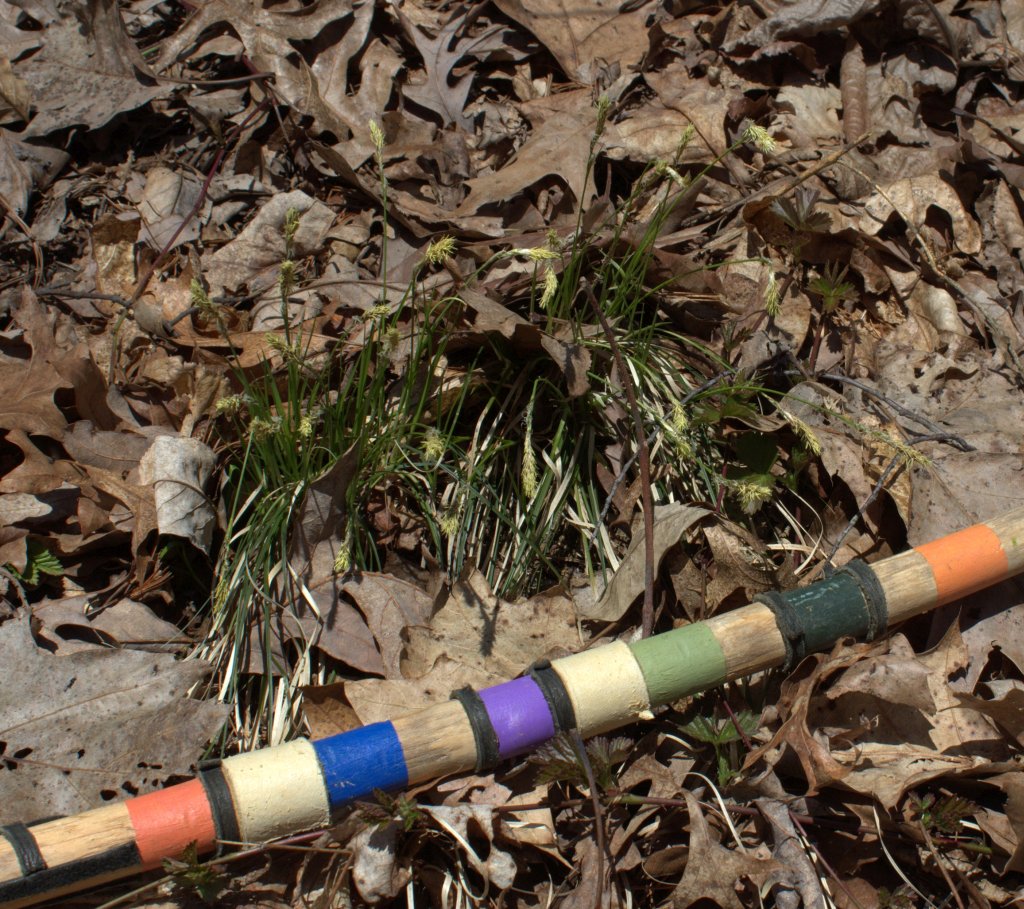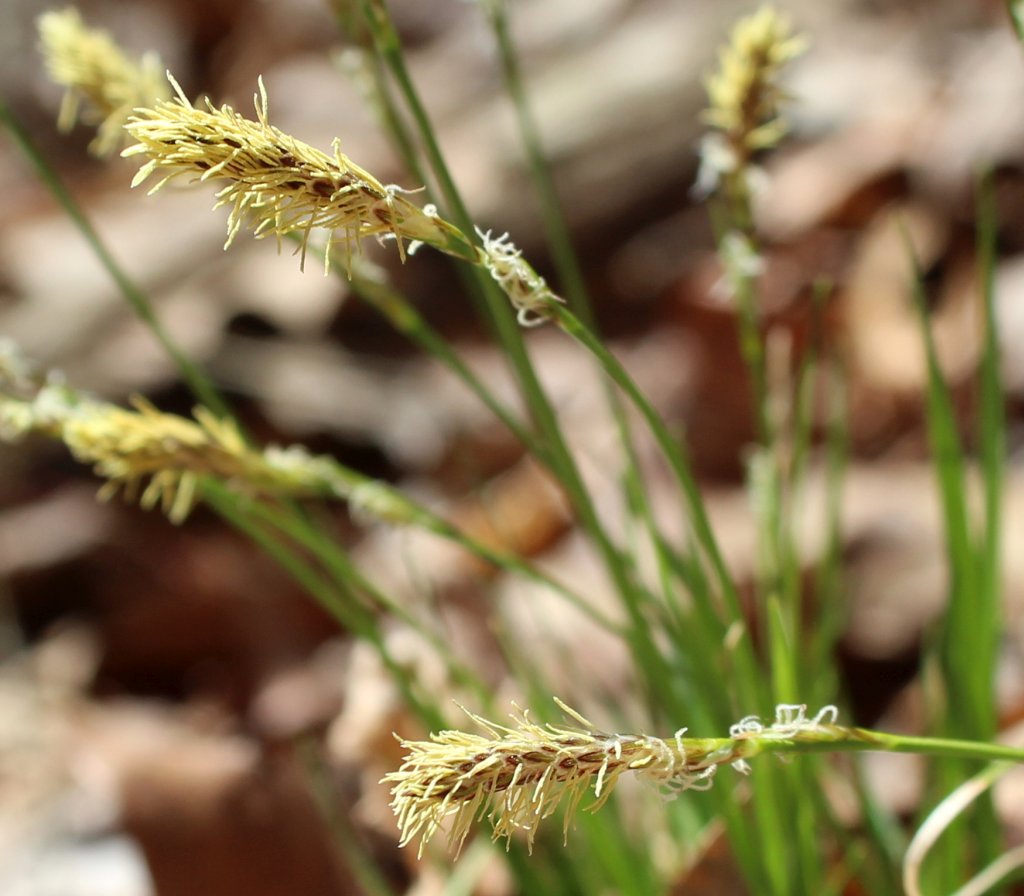One never knows all that they’re going to see on a nature walk and sometimes a new discovery is made. That was the case on one of my walks to find hepatica flowers.
Well, I did find lots of hepatica blooming on that walk on 21 April 2014, so much so that I now call the general location Hepatica Hill.
I climbed up a steep wooded hill, up from a hollow where mountain spring water was running down, searching for anything growing or blooming when I came upon what looked like a clump of grass. This bit of “grass” seemed a little out of place
being surrounded by all those dead oak leaves, but it was something green to investigate.
As I got closer I could see it wasn’t like a clump of grass from the yard. Several dusty yellow flowers were present and it was only the middle of April. Grass in my yard blooms in summertime when it’s not cut too fast, so I instinctively knew this plant was something different.
This plant that was new to me that day is known as Pennsylvania Sedge, Carex pensylvanica, a member of Cyperaceae, the Sedge Family.

Each color band on my walking stick represents one inch so this example of PA sedge is about 8 inches across.
PA sedge is a small plant that reaches only 6-8 inches tall, although each blade or leaf may reach longer if pulled out straight. The angular blades have a noticeable midrib and an arching habit so a group of leaves looks like a rounded clump of grass.
Leaf blades are green in spring and summer and fade to tan in fall and winter. This Carex sp. may be an irregular type of sedge as it was found in dry conditions near the top of a mountain ridge, where most of its relatives can be found in and around wet conditions.
Look for Pennsylvania Sedge to be growing in forests with rocky or sandy soil and on prairies, too.

Both male and female flowers are found on the same flowering stem. The terminal male flowers are yellow and linear in shape while the proximal female flowers are white and wavy in shape.

Although I’d heard the term ‘sedge’ before I’d never paid much attention to these grass-like plants. Since finding this new plant, to me at least, I can say I have more appreciation for the Carex of our world.
If you’d like to learn a lot more about Sedges, pick up a field guide specific to the Sedge Family. You’ll need it because there are about 2,000 species!
Gardeners and landscapers should know that sedges are very useful and can be beautiful, too. Sedges do well planted in containers, they are deer-resistant, they prefer shady areas, they work well for erosion control, they provide winter interest as their foliage sticks around – and in the case of PA sedge will bloom early in the year, and they’re perennials, too!
